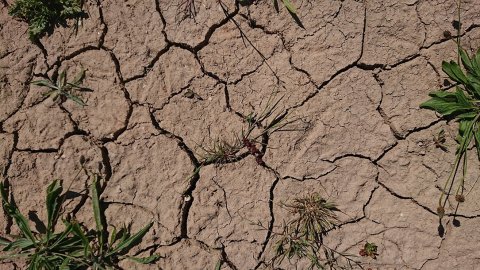Future challenges
In recent years, droughts have increasingly become a challenge for delta populations which is projected to further increase in the future. It is therefore imperative to explore efficient, inclusive and integrated drought adaptation strategies.
Integration of drought management
These strategies need to be reconciled with strategies that tackle other challenges in deltas, such as sea-level rise and flooding (Storyline: Flood risk management), land subsidence (Storyline: Sinking deltas), urbanisation and population growth. For instance, expanding water storage capacities can mitigate droughts, land subsidence and saltwater intrusion but also increases the deltas’ vulnerability to flooding. Future research can provide insight into the damage caused by droughts and explore integrated solutions. However, In the end, science counts but politics decides
, argues Carel Dieperink, senior researcher in multilevel water governance, and a societal debate on acceptable impacts of droughts and flooding should therefore start as soon as possible.
We need to make choices that could have a large impact on how to spatially develop the delta
Competing interests
Societal debates on freshwater demands and required water levels are essential since there are many interests involved that need to be considered, held by different stakeholders e.g. farmers, industry, nature organisations and homeowners. Potential trade-offs between interests of different societal sectors and prioritization of particular water functions during droughts therefore urgently need to be discussed. Moreover, Niko Wanders, assistant professor of hydrological extremes, argues, Under consideration of the need for long-term adaptation to droughts and the different interests in land use, we need to make choices that could have a large impact on how to spatially develop the delta. This could, for example, imply grouping land-use functions by water level
.
Institutional challenge
Integration of drought issues with spatial planning, water and flood risk management also poses a governance challenge. In deltas with a traditional flood risk management, an integrated approach requires a change in mindset, for instance in a way that surplus water is not drained as fast as possible but retained in groundwater and other freshwater resources. To achieve this transition in water management, institutions, such as regional water authorities, might obtain a new or different role for which they also require different or new legal instruments
, notes Tony Barshini, junior researcher at the Utrecht Centre for Water, Oceans and Sustainability Law studying the legal environment of Dutch water authorities in addressing future challenges. In less developed countries, on the other hand, institutions for climate change adaptation urgently need to be established and improved to be able to deal with the projected increase in drought severity. It is necessary, for instance, that these institutions can effectively monitor water supply and use and regulate groundwater extraction.

Holistic approach
Moreover, current water management is sometimes fragmented over various institutional levels e.g. groundwater management in the Netherlands is distributed over regional water authorities, provinces and homeowners. In the future it is crucial that these different levels of decision making on water scarcity issues are well connected e.g. by a leading role of the national government. In addition, since boundaries of deltas and countries do not align, transboundary water governance will likely gain importance in the future. Furthermore, adopting an inclusive approach is imperative to prevent water-related conflicts and people suffering from the impacts of climate change.
Raising awareness
Social and political support for many solutions for dealing with droughts is not self-evident. Raising awareness among citizens and policymakers that droughts are likely to occur more frequently and intensely in the future with potentially severe consequences is essential to create the broadest possible support for integrated solutions that may include encouraging a decrease in individual water demands. Translating and communicating forecasting and monitoring results, also eventually to inform citizens about the urgency to mitigate and adapt to droughts, is important. The latter asks for a well-functioning science-policy interface.

